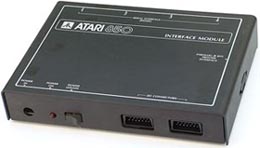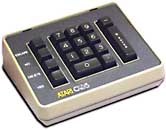|
|---|
Partial History of the Atari Computers |
- 196?: As an engineering student at the University of Utah, Nolan Bushnell liked to sneak into the computer labs
late at night to play computer games on the university's $7 million mainframes.
- 1972: Bushnell founded Atari with $250 of his own money and another
$250 from business partner Ted Dabney. They then created and commercialized the world's first
commercial video game, Pong. Bushnell was 27 years old.
- 1976: Warner Communications buys Atari from Bushnell for $28 million.
- 1977: Atari introduces the Atari Video Computer System (VCS), later renamed the Atari 2600
- 1978: December - Atari announces the Atari 400 and 800 personal computers.
- 1979: October - Atari begins shipping the Atari 400 and Atari 800 personal computers.
- 1979: December - Atari produces the first coin-operated Asteroids game machine.
- 1981: May - Atari announces the 8KB Atari 400 is being discontinued.
- 1982: January - Atari begins shipping all Atari 800 units with GTIA graphics chips, allowing three
more graphics modes than previously.
- 1982: December - Atari issues a US$55 rebate on the Atari 400, dropping its retail price to under US$200.
- 1983: January - Atari introduces the 1200XL home computer.
- 1983: May - Atari offers a US$100 rebate on the Atari 800, bringing its retail price to below US$400.
- 1983: June - Atari introduces the Atari 600 XL.
- 1983: June - Atari introduces the Atari 800 XL, with 64 KB RAM.
- 1983: June - Atari introduces the Atari 1450 XL, with built-in 300 bps modem.
- 1983: June - Atari introduces the Atari 1450 XLD, with built-in 300 bps modem and disk drive.
- 1983: October - Atari begins shipping its XL computers.
- 1983: - Atari cancels production of the Atari 1200XL, due to compatibility and other problems.
- 1984: July - Jack Tramiel, President of Commodore International, leaves Commodore in January and buys Atari.
- 1984: - Atari introduces the Atari 7800 ProSystem.
- 1985: January - Atari introduces the 65XE, for US$120.
- 1985: Atari introduces the 130XE, with 128KB RAM.
- 1985: Atari introduces the 130ST for US$400.
- 1985: Atari introduces the 520ST for US$600.
- 1987: January - At the Winter CES, Atari announces a US$1500 laser printer.
- 1988: September - Atari introduces the Atari TT.
- 1989: - Atari Computer introduces the Portfolio,
a 1-pound DOS-based PC, which runs on three AA batteries. Price: US$400
Source:
Chronology of Events in the History of Microcomputers
| |
|---|
|




 Seen here on the right is the first Atari modem, the Atari 830 Acoustic Couple Modem.
It has two cups on top to cradle the telephone handset, and it requires both the Atari 850
Interface Module (seen above) and the TeleLink I ROM cartridge (left) to operate.
Seen here on the right is the first Atari modem, the Atari 830 Acoustic Couple Modem.
It has two cups on top to cradle the telephone handset, and it requires both the Atari 850
Interface Module (seen above) and the TeleLink I ROM cartridge (left) to operate.
 The second modem released was the Atari 835 Direct Connect Modem, a stand-alone unit which hooks
directly to the telephone line and does not use the 850 Interface Module. It does, however, require
the Atari Telelink II ROM cartridge.
The second modem released was the Atari 835 Direct Connect Modem, a stand-alone unit which hooks
directly to the telephone line and does not use the 850 Interface Module. It does, however, require
the Atari Telelink II ROM cartridge.
